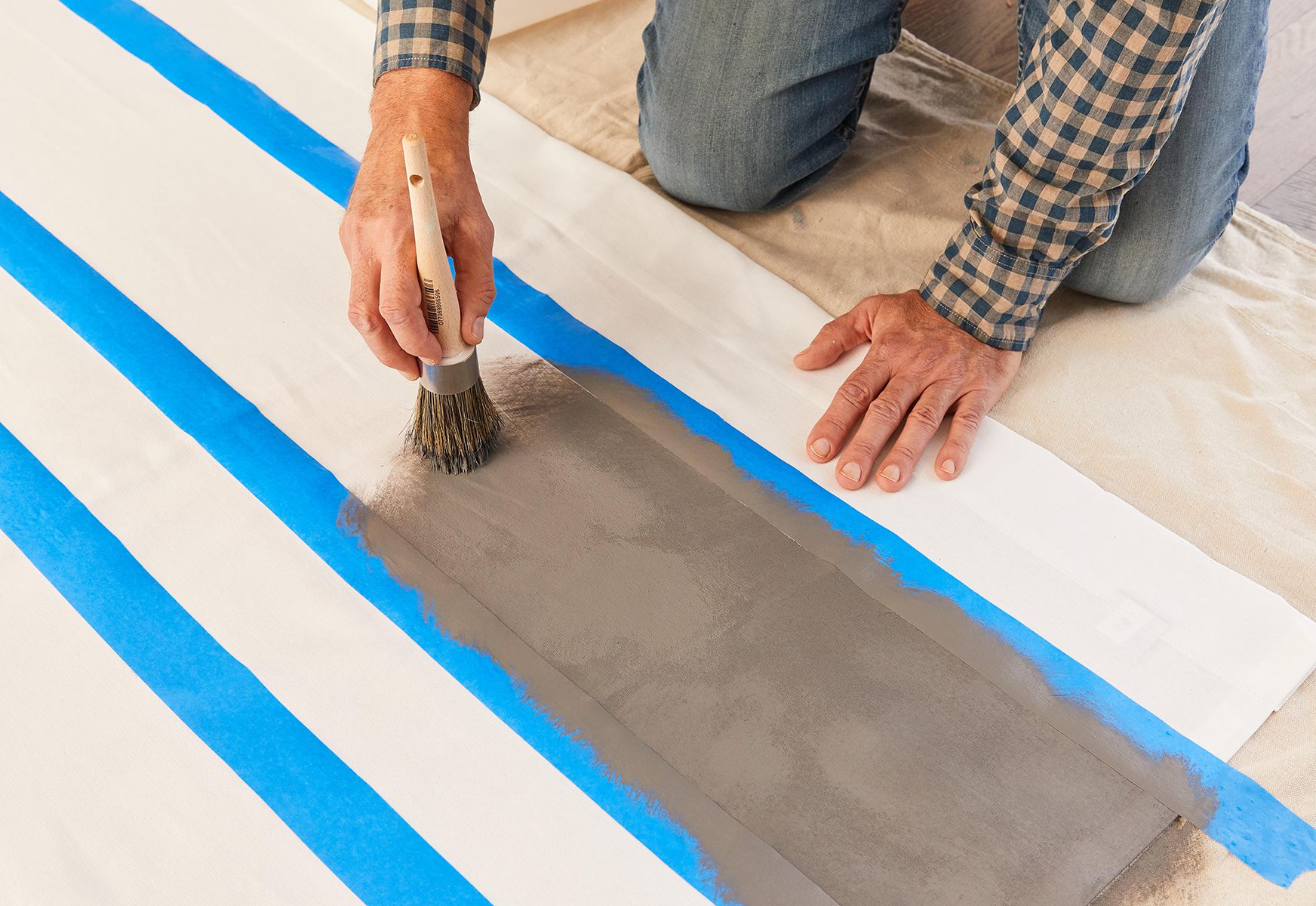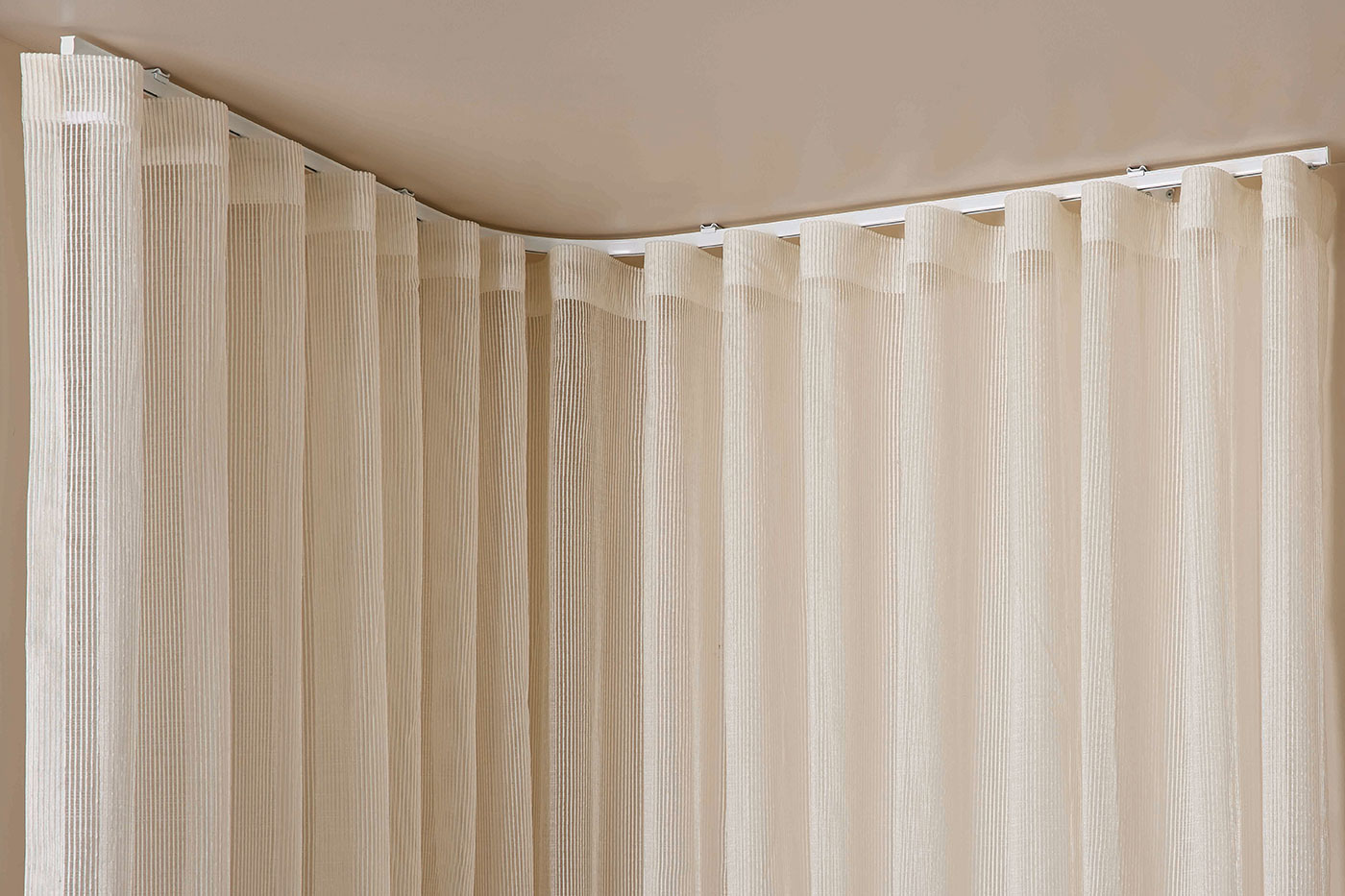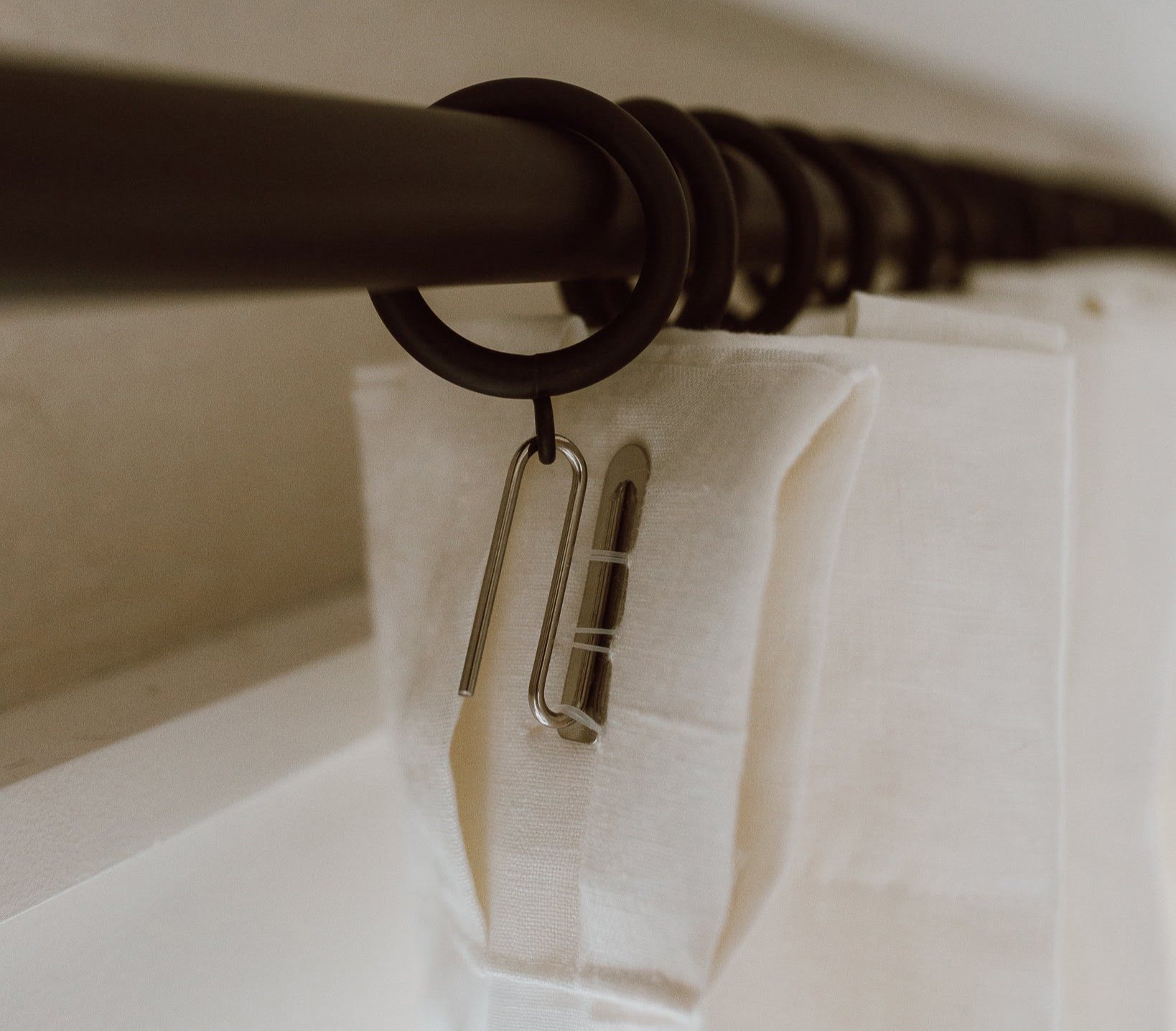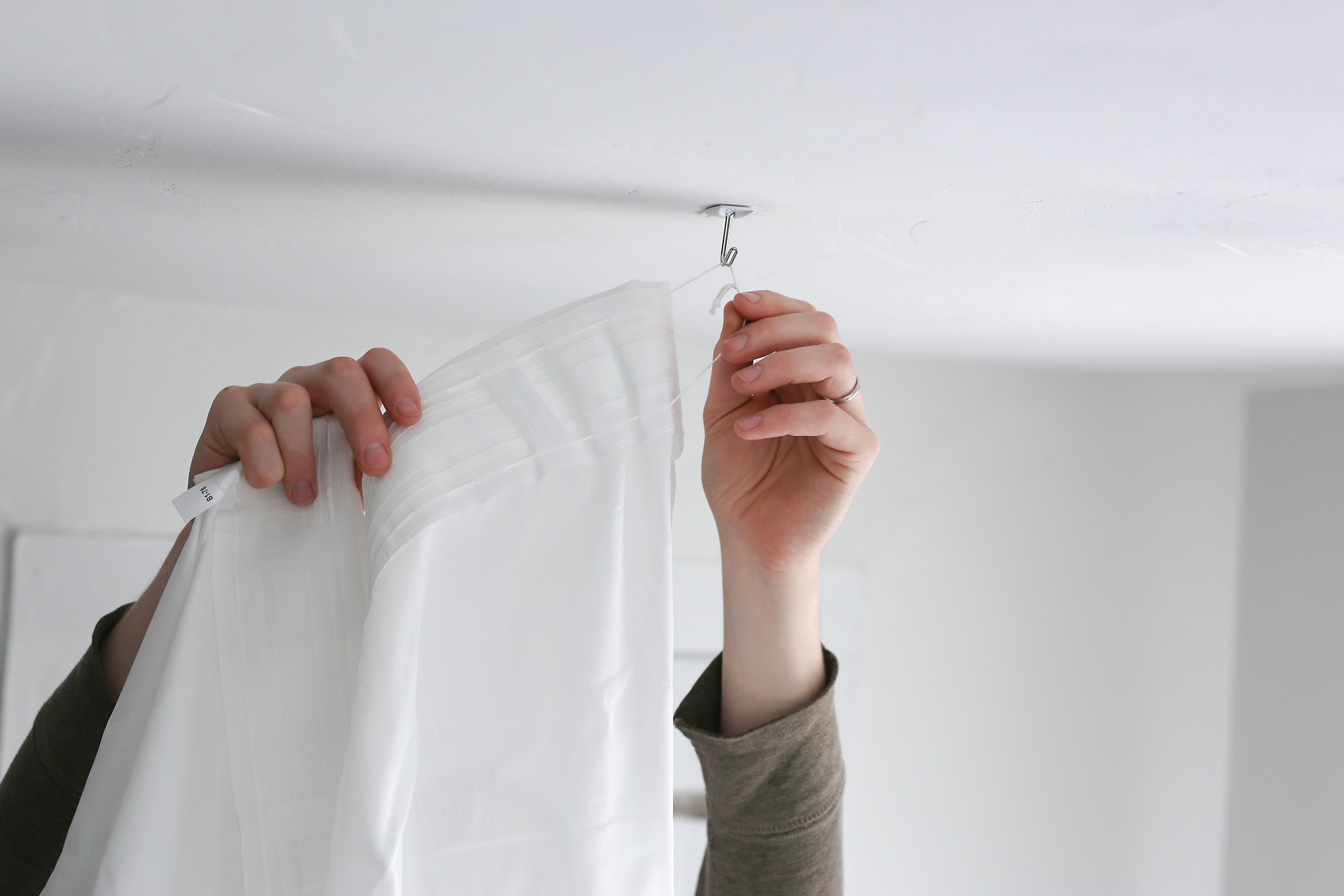

Articles
How To Store Curtains
Modified: October 18, 2024
Learn how to properly store your curtains to keep them looking fresh and wrinkle-free. Read our articles for essential tips and tricks!
(Many of the links in this article redirect to a specific reviewed product. Your purchase of these products through affiliate links helps to generate commission for Storables.com, at no extra cost. Learn more)
Introduction
When it comes to refreshing the look of your home or protecting your curtains during a move, proper storage is essential. Storing curtains may seem like a simple task, but it requires careful consideration to maintain their quality and appearance. The way you store your curtains can impact their lifespan, overall condition, and ease of use in the future.
In this article, we will explore the best practices for storing curtains. We will discuss how to assess the fabric and condition of the curtains, different cleaning methods, and the benefits of folding versus rolling when it comes to storage. We will also address the importance of choosing a suitable storage location, preparing the curtains for storage, and the various options available for storing curtains, such as boxes and hanging garment bags. Additionally, we will provide tips to help you avoid potential damages and pests during storage, as well as guidance for long-term curtain storage.
By following the guidelines outlined in this article, you can ensure that your curtains remain in pristine condition and are ready to be used again whenever you need them.
Key Takeaways:
- Properly storing curtains is essential for maintaining their quality and prolonging their lifespan. Assess fabric, clean thoroughly, and choose suitable storage methods to ensure curtains remain fresh and ready for use.
- When storing curtains, consider factors such as fabric type, storage location, and long-term preservation. Take precautions to avoid potential damages, protect against pests, and ensure proper ventilation for optimal curtain storage.
Read more: How To Store Curtain Lights
Assessing the Fabric and Condition of the Curtains
Before storing your curtains, it is essential to assess their fabric and condition. This step will help you determine the best approach for cleaning and storing them to ensure their longevity. Here are some key factors to consider:
Fabric Type: Different curtain fabrics require specific care. Take note of the fabric type, such as linen, silk, cotton, or polyester. Refer to the care instructions provided by the manufacturer to identify any specific cleaning or storage requirements.
Stains or Damage: Inspect the curtains for any stains, tears, or other damage. Addressing these issues before storage will prevent further deterioration and ensure that you store them in the best possible condition.
Colorfastness: If your curtains have vibrant or dark colors, test for colorfastness by dampening a small, inconspicuous area and blotting it with a white cloth. If the color transfers, it indicates that the curtain may bleed or fade during storage. Consider using colorfast treatments or storing these curtains separately to avoid transferring color to other items.
Odor: If your curtains have any lingering smells, such as smoke or cooking odors, it is best to address them before storing. Air them out outdoors or use fabric-specific odor neutralizers to eliminate any unpleasant smells.
Hardware Removal: Depending on the type of curtains, you may need to remove any hooks, rods, or other hardware before storing. This will prevent any damage to the fabric or hardware during storage and ensure a smoother folding or rolling process.
Taking the time to assess the fabric and condition of your curtains will help you determine the appropriate cleaning methods and storage options. This proactive approach will ensure that your curtains stay in excellent condition and are ready for use when you retrieve them from storage.
Cleaning the Curtains
Before storing your curtains, it is important to clean them properly to remove dust, dirt, and any stains that may have accumulated. The cleaning method will depend on the fabric type and any specific care instructions provided by the manufacturer. Here are some general tips for cleaning your curtains:
Machine-Washable Curtains: If your curtains are machine-washable, follow the care instructions and use a gentle cycle with mild detergent. Opt for a cold or lukewarm water temperature to avoid any shrinkage or color fading. Before washing, make sure to remove any hardware and tie any loose strings or cords to prevent tangling or damage to the curtains.
Hand-Washing: For delicate or non-machine washable fabrics, hand-washing is often the best option. Fill a clean sink or basin with lukewarm water and a mild detergent suitable for the fabric type. Gently agitate the curtains in the soapy water, avoiding any harsh scrubbing or twisting, and rinse thoroughly. Afterward, carefully squeeze out excess water without wringing and blot dry with a clean towel.
Dry Cleaning: Some curtains may require dry cleaning due to their fabric composition or intricate design. Take your curtains to a reputable dry cleaner experienced in handling curtains. Be sure to communicate any specific stains or concerns to ensure proper treatment during the cleaning process.
Spot Cleaning: If you notice any small stains or soiled areas on your curtains, spot cleaning may be sufficient. Use a mild detergent or a specialized fabric cleaner suitable for the fabric type. Gently blot the affected area with a clean cloth or sponge, starting from the outer edges and moving towards the center, to prevent spreading the stain further.
Drying: After cleaning, it is crucial to allow the curtains to dry thoroughly before storing them. If possible, hang them outside on a clothesline or use a drying rack indoors. Avoid direct sunlight, as it can fade the colors. Alternatively, you can use a dryer on low heat or air-dry them flat on a clean, dry surface. Ensure they are completely dry to prevent mold or mildew growth during storage.
By following these cleaning guidelines, you can ensure that your curtains are fresh, clean, and ready for storage. Clean curtains not only maintain their appearance but also prevent dirt or stains from settling in during storage, preserving their quality over time.
Folding vs. Rolling Curtains for Storage
When it comes to storing curtains, you have two primary options: folding or rolling. Each method has its advantages and considerations, so let’s explore the implications of folding and rolling curtains for storage:
Folding: Folding curtains is a popular storage method as it allows for compact storage and easy organization. Here are some tips for folding curtains:
- Start by removing any hardware or accessories attached to the curtains. This includes hooks, rings, or tiebacks.
- Place the curtain on a clean, flat surface, such as a bed or clean floor.
- Fold the curtain in half lengthwise, aligning the bottom hem with the top.
- Continue folding the curtain in halves or thirds until it reaches a manageable size.
- Make sure to fold the curtain loosely to avoid unnecessary creasing, especially for delicate fabrics.
Rolling: Rolling curtains is an alternative method that can be beneficial for certain types of fabrics. Here’s how to roll curtains for storage:
- Remove any hardware or accessories from the curtains, just like in the folding method.
- Start at one end of the curtain and roll it loosely towards the other end.
- Avoid rolling the curtains too tightly, as this can cause creasing or permanent wrinkles.
- If the fabric is delicate or prone to wrinkle, consider rolling the curtains around a clean, acid-free tube or dowel to maintain their shape.
Ultimately, the decision between folding and rolling depends on various factors, including the fabric type, curtain length, storage space availability, and personal preference.
Folding is ideal for smaller spaces or when you have multiple curtains to store together. It is a more space-efficient approach and allows for easier organization and retrieval. However, it may result in creases and wrinkles, particularly in delicate or heavyweight fabrics.
Rolling, on the other hand, is better suited for longer curtains or fabrics that are prone to creasing. It can help maintain the shape and integrity of the curtains during storage. However, consider the storage space required for rolled curtains, as they may take up more room compared to folded curtains.
Regardless of the method you choose, make sure to avoid storing curtains under heavy objects that can cause unnecessary pressure or damage. Proper folding or rolling will help preserve the appearance and quality of your curtains, ensuring they are ready for use when you need them next.
Choosing a Suitable Storage Location
When it comes to storing curtains, selecting an appropriate storage location is crucial to maintain their quality and prevent any potential damage. Here are some factors to consider when choosing a suitable storage location for your curtains:
Clean and Dry Environment: It is imperative to store your curtains in a clean and dry environment to prevent mold, mildew, and discoloration. Choose a storage space that is free from moisture, humidity, and direct sunlight. Avoid areas such as basements or attics that may be prone to dampness or temperature fluctuations.
Avoiding Temperature Extremes: Curtains are sensitive to extreme temperatures, which can cause fabric deterioration. Select a storage location with a stable temperature to prevent damage. It is best to store curtains in an area with a temperature between 50 and 80 degrees Fahrenheit (10 to 26 degrees Celsius).
Avoiding Exposure to Sunlight: Prolonged exposure to sunlight can cause fading and deterioration of curtain fabrics. Choose a storage space away from windows or opt for curtains specifically designed to withstand sunlight if storing them in a sunlit area is unavoidable.
Protection from Dust: Dust can accumulate on curtains during storage, leading to discoloration and a dirty appearance. Choose a storage location where you can minimize dust exposure. Seal the curtains in containers, use garment bags, or cover them with clean sheets to provide an extra layer of protection against dust.
Ample Space: Ensure that the storage location provides enough space to accommodate the folded or rolled curtains without compressing or crushing them. Curtains need room for air circulation to prevent musty odors and allow the fabric to breathe.
Away from pets and pests: Keep your curtains in a location away from pets and pests. Pets may be tempted to use the curtains as a scratching post, and pests like moths can damage the fabric. Consider using mothballs or lavender sachets to deter pests.
Accessibility: Keep in mind the accessibility of the storage location. If you anticipate needing to retrieve your curtains frequently, choose a storage space that allows for easy access without having to move other items or navigate through cluttered areas.
Taking these factors into account will help you choose a suitable storage location that will preserve the quality and condition of your curtains. By ensuring a clean, dry, and protected environment, you can extend the lifespan of your curtains and have them ready to use whenever the need arises.
Read more: How To Change Curtains
Preparing the Curtains for Storage
Before storing your curtains, it is essential to properly prepare them to ensure they remain in good condition while in storage. Here are some steps to follow when preparing your curtains for storage:
Clean the Curtains: As mentioned earlier, cleaning your curtains before storage is crucial to remove any dust, stains, or odors. Follow the appropriate cleaning method for your curtain fabric and ensure they are completely dry before moving on to the next step.
Remove Hardware and Accessories: Take the time to remove any hooks, rings, tiebacks, or other hardware attached to your curtains. Hardware can cause unnecessary creases or damage during storage. Store these items separately in a labeled bag or container, making it easier to retrieve and reattach them when you decide to use the curtains again.
Inspect for Damage: Give your curtains a thorough inspection to identify any existing damage, such as tears, loose threads, or weakened areas. Repair any minor damages if possible, or consider seeking professional help for more extensive repairs. Addressing damage before storage will prevent further deterioration while your curtains are in storage.
Iron or Steam: If your curtains have stubborn wrinkles or creases, iron or steam them before storing. Follow the manufacturer’s instructions for ironing or use a steamer to gently remove any wrinkles. Be careful not to use excessive heat or pressure that could damage the fabric. Remember to allow the curtains to cool completely before folding or rolling them for storage.
Consider Using Protective Liners: For extra protection, you can use protective liners between your curtains. Acid-free tissue paper or clean cotton sheets can be used to prevent fabric discoloration or sticking between layers. Avoid using colored tissue paper, as the dyes may transfer to the curtains over time.
Label and Document: It’s beneficial to label your curtains for ease of identification in the future. Use a pen or label maker to mark the type of curtains, fabric composition, and any specific care instructions. Additionally, keep a detailed inventory or document as a reference to keep track of the curtains stored, especially if you have multiple sets or styles.
Store in Breathable Containers: Choose storage containers that are breathable, such as fabric storage bags or boxes with ventilation holes. Avoid using plastic bags or airtight containers, as they can trap moisture and lead to mold or mildew growth.
By following these steps, you can ensure that your curtains are properly prepared for storage. Taking the time to clean, inspect, and protect your curtains will help maintain their quality, so they are ready to be used again when you retrieve them from storage.
Store curtains in a cool, dry place away from direct sunlight to prevent fading. Avoid folding them for long periods to prevent creases, and consider hanging them on padded hangers to maintain their shape.
Storing Curtains in Boxes
Using boxes for storing curtains is a popular and effective method to keep them organized and protected. Here are some steps to follow when storing curtains in boxes:
Choose the Right Size of Boxes: Select boxes that can accommodate the size of your folded or rolled curtains without excessively compressing them. It’s best to use sturdy, corrugated cardboard boxes that are in good condition.
Clean and Line the Boxes: Before placing your curtains in the boxes, ensure they are clean and dry. Line the boxes with acid-free tissue paper or clean cotton sheets to provide an extra layer of protection and prevent staining or sticking between layers of curtains.
Fold or Roll the Curtains: Depending on your preference and the fabric type, fold or roll the curtains as described earlier. Remember to fold or roll them loosely to avoid excessive creasing or damage to the fabric.
Place Curtains in Boxes: Carefully place the folded or rolled curtains into the prepared boxes. Avoid overcrowding the boxes to allow for proper air circulation and to prevent unnecessary pressure on the curtains.
Label the Boxes: Label each box with the contents, such as the type of curtains, color, and any specific care instructions. This will make it easier to locate specific curtains when you need them in the future.
Stack Boxes Properly: When stacking the boxes, ensure they are stable and not at risk of toppling over. Place heavier boxes at the bottom and lighter ones on top to maintain balance. Consider using furniture sliders or pallets to elevate the boxes off the ground and protect them from moisture or pests.
Store in a Dry and Controlled Environment: Place the boxes of curtains in a dry and controlled environment where temperature and humidity levels are stable. Avoid areas prone to moisture, such as basements or attics, as they can cause moisture damage or mold growth. Ideally, store the boxes on sturdy shelves to keep them off the floor and prevent pests from accessing them.
Regularly Check on the Curtains: Periodically check on the stored curtains to ensure they are in good condition. This will allow you to address any potential issues promptly, such as moisture buildup or pest infestations.
Storing curtains in boxes not only keeps them organized but also protects them from dust, insects, and light exposure. By following these steps, you can ensure that your curtains remain in excellent condition while in storage and are ready for use whenever you need them again.
Storing Curtains in Hanging Garment Bags
If you prefer keeping your curtains hanging rather than folded or rolled, storing them in hanging garment bags is an excellent option. Here are some steps to follow when storing curtains in hanging garment bags:
Choose the Right Garment Bags: Select garment bags that are long enough to accommodate the length of your curtains. Opt for bags made of breathable material, such as cotton or canvas, to allow for proper air circulation.
Prepare the Curtains: Before hanging your curtains in garment bags, ensure they are clean and dry. Iron or steam out any wrinkles, and remove any hardware or accessories attached to the curtains.
Hang the Curtains: Slide the curtains onto a sturdy hanger or rod. For longer curtains, use multiple hangers or a curtain-specific rod that supports the length without causing excessive sagging or damage. If needed, fold the curtains in half or thirds to fit them onto the hanger without excessive bunching or wrinkling.
Place Curtains in Garment Bags: Carefully insert the hanger with the curtains into the garment bag. Ensure that the curtains are positioned properly without being tightly squeezed or excessively folded within the bag.
Secure the Bags: Close the garment bag securely, ensuring that any zippers or closures are fully fastened. This will prevent dust, insects, and light exposure while the curtains are in storage.
Label the Bags: Label each garment bag with the necessary information, such as the type of curtains, color, and any specific care instructions. This will make it easier to identify and retrieve specific curtains when needed.
Hang in a Suitable Location: Choose a suitable location to hang the garment bags. Ideally, select a dry, cool, and dark area with stable temperature and humidity levels. Avoid placing the bags near direct sunlight or areas prone to moisture, as these can cause damage or fading to the fabric.
Regularly Check on the Curtains: Periodically inspect the stored curtains to ensure they are in good condition. Check for signs of moisture, pests, or any other potential damage. This will allow you to take corrective actions promptly and maintain the quality of your curtains.
Storing curtains in hanging garment bags provides a convenient way to keep them organized, minimize creasing, and protect them from dust and light exposure. By following these steps, you can ensure that your curtains remain in excellent condition while in storage and are ready to be hung up and used whenever you need them.
Avoiding Potential Damages and Pests during Storage
When storing your curtains, it is important to take precautions to prevent potential damages and protect them from pests. Here are some measures you can take to avoid common issues during storage:
Avoid Moisture and Humidity: Moisture and humidity can lead to mold, mildew, and fabric damage. Select a storage location that is dry and well-ventilated. Consider using dehumidifiers or moisture-absorbing products to maintain a low humidity level. Avoid storing curtains in areas prone to dampness, such as basements or attics.
Protect from Sunlight: Prolonged exposure to sunlight can fade and damage curtain fabrics. Choose a storage location away from direct sunlight or use curtains specifically designed to withstand sunlight if storing them in a sunlit area is unavoidable. Cover windows with blinds or curtains to block out sunlight in the storage space.
Use Acid-Free Containers: Acid can cause discoloration and deterioration of fabric over time. When using boxes or bins for storage, make sure they are acid-free or line them with acid-free tissue paper or cotton sheets. This will help prevent any chemical reactions that could damage the curtains.
Seal Against Dust: Dust can accumulate on curtains during storage, leading to a dirty appearance and potentially damaging the fabric. Ensure that the storage containers or garment bags are sealed properly to keep out dust. Use tape or zippered closures to create a tight seal.
Keep Away from Pests: Pests like moths and silverfish can cause damage to curtains. To deter pests, consider using mothballs, cedar chips, or lavender sachets in the storage area. Avoid using mothballs directly touching the curtains, as they can leave a strong odor. Regularly inspect the storage area for signs of pest activity or damage and take appropriate measures if needed.
Avoid Weight and Pressure: Avoid placing heavy objects on top of stored curtains, as it can cause unnecessary pressure and damage. Properly stack storage boxes and avoid overstuffing them, as this can compress the curtains and create wrinkles or creases that may be difficult to remove.
Maintain Air Circulation: Proper air circulation is important to prevent musty odors and mold growth. Avoid tightly compressing curtains or sealing them in airtight containers, as this can trap moisture. Leave some space around the curtains and use breathable storage solutions.
By following these measures, you can protect your curtains from potential damages and prevent pests from causing harm. These precautions will help to ensure that your curtains stay in excellent condition throughout the storage period, preserving their quality and extending their lifespan.
Read more: What Size Curtain Rod For Grommet Curtains
Tips for Long-Term Curtain Storage
When storing curtains for an extended period, it is important to take extra measures to ensure their long-term preservation. Here are some tips to keep in mind for long-term curtain storage:
Clean Before Storage: Thoroughly clean your curtains before storing them for an extended period. Any dirt, stains, or odors left on the fabric can become more difficult to remove over time and may cause permanent damage. Ensure that the curtains are completely dry before storage to prevent mold or mildew growth.
Consider Vacuum Sealing: If storing curtains for a very long time, vacuum sealing can help minimize air exposure and reduce the risk of deterioration. However, be cautious with delicate fabrics, as vacuum sealing may cause damage or creasing. Only use this method if the fabric and construction of the curtains can withstand it.
Use Acid-Free Storage Materials: Acid-free tissue paper, cotton sheets, or archival-quality boxes are ideal for long-term storage. Acid can yellow or weaken fabric over time. Place acid-free materials between layers of curtains and line the storage boxes for added protection.
Rotate and Refold: It is recommended to periodically rotate and refold your curtains in storage. This helps prevent permanent creasing or folds that could become difficult to remove. By rotating and refolding every few months, you redistribute the stress on the fabric and prevent it from developing weak points.
Protect Against Pests: Inspect the storage area regularly for signs of pests and take appropriate measures to prevent infestations. Use natural repellents such as cedar chips, lavender sachets, or insect repellent pouches containing mothballs to deter pests and protect your curtains. Ensure that the repellents do not come into direct contact with the fabric.
Avoid Exposure to Extreme Temperatures: Extreme temperatures, whether hot or cold, can damage curtain fabric and cause fading or deterioration. Choose a storage location with a stable temperature, ideally between 50 and 80 degrees Fahrenheit (10 to 26 degrees Celsius). Avoid areas such as attics or basements that may experience temperature fluctuations.
Keep Records: Keep a detailed record or inventory of the stored curtains. Note the type of curtains, fabric composition, date of storage, and any specific care instructions. This will help you keep track of the curtains and ensure that you rotate and inspect them regularly.
Ensure Proper Ventilation: Adequate airflow is essential for long-term storage. Avoid sealing curtains in airtight containers or covering them with plastic, as this can lead to moisture buildup and mold growth. Use breathable storage solutions, such as fabric garment bags or acid-free boxes with ventilation holes.
Retrieve and Air Out Periodically: Even in long-term storage, it is beneficial to air out your curtains periodically. Take the opportunity to inspect the fabric, check for any signs of damage or pests, and prevent any musty odors from setting in. Hang the curtains outdoors or in a well-ventilated area for a short period before returning them to storage.
By following these tips, you can ensure that your curtains remain in optimal condition throughout long-term storage. Taking the extra steps to preserve their quality will ensure that they are ready to be used again in their best state once you retrieve them.
Conclusion
Properly storing curtains is vital to maintain their quality and prolong their lifespan. By following the guidelines and tips outlined in this article, you can ensure that your curtains remain in excellent condition while in storage and are ready to be used whenever you need them again.
Assessing the fabric and condition of the curtains allows you to determine the appropriate cleaning methods and storage options. Cleaning the curtains thoroughly removes any dirt, stains, or odors, ensuring they are fresh and ready for storage.
Choosing between folding and rolling curtains depends on factors such as fabric type, storage space availability, and personal preference. Folding offers a space-efficient and organized approach, while rolling is ideal for maintaining the shape and integrity of longer or delicate curtains.
Selecting a suitable storage location is crucial to protect curtains from moisture, sunlight, dust, and pests. A clean, dry, and well-ventilated environment with stable temperature and humidity levels will help maintain the curtains’ quality over time.
Preparing curtains for storage involves removing hardware, inspecting for damage, and ironing or steaming out any wrinkles. Properly folded or rolled curtains should be placed in breathable containers or hanging garment bags, while taking measures to prevent potential damages and pests during storage.
For long-term storage, additional precautions, such as using acid-free storage materials, rotating and refolding curtains, and protecting against pests, are advisable. Regular inspection, retrieval, and airing out of stored curtains will help maintain their freshness and condition.
By implementing these practices, you can ensure that your curtains are well-preserved and ready for use whenever you need to refresh your home décor or protect them during a move. Taking the time and care to properly store your curtains will ensure their longevity, allowing you to enjoy them for many years to come.
Frequently Asked Questions about How To Store Curtains
Was this page helpful?
At Storables.com, we guarantee accurate and reliable information. Our content, validated by Expert Board Contributors, is crafted following stringent Editorial Policies. We're committed to providing you with well-researched, expert-backed insights for all your informational needs.














0 thoughts on “How To Store Curtains”